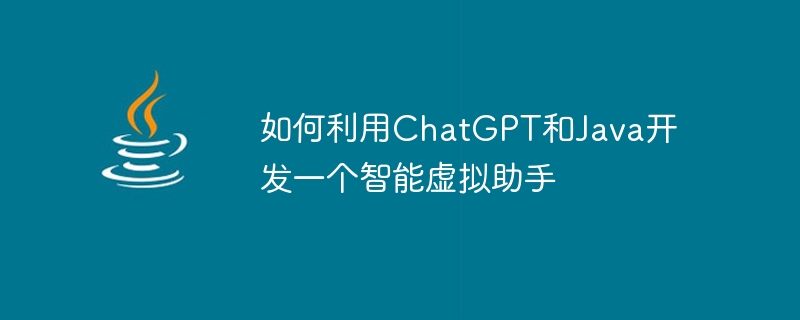

How to use ChatGPT and Java to develop an intelligent virtual assistant
Introduction:
With the development of artificial intelligence, intelligent virtual assistants play a role in our lives increasingly important role. ChatGPT is an intelligent dialogue system based on language models that can understand and generate natural language. This article will introduce how to use ChatGPT and Java to develop an intelligent virtual assistant, and provide specific code examples.
Configure API key
Add the obtained API key to the project's configuration file, or define a constant directly in the code to save the API key. For example:
final String apiKey = "YOUR_API_KEY";
Implementing interaction with ChatGPT
Next, we need to implement interaction with ChatGPT. You can use Java's HTTP request library (such as OkHttp) to send an HTTP POST request to the ChatGPT API and parse the returned response. The following is a simple sample code:
import okhttp3.*;
public class ChatGPTClient {
private static final String API_URL = "https://api.openai.com/v1/chat/completions";
private final OkHttpClient httpClient;
public ChatGPTClient() {
this.httpClient = new OkHttpClient();
}
public String sendRequest(String message) throws Exception {
String jsonData = "{"model": "gpt-3.5-turbo", "messages": [{"role": "system", "content": "You are a helpful assistant."}, {"role": "user", "content": "" + message + ""}]}";
RequestBody requestBody = RequestBody.create(jsonData, MediaType.parse("application/json"));
Request request = new Request.Builder()
.url(API_URL)
.addHeader("Authorization", "Bearer " + apiKey)
.post(requestBody)
.build();
try (Response response = httpClient.newCall(request).execute()) {
if (!response.isSuccessful()) {
throw new Exception("Failed to send request: HTTP error code: " + response.code());
}
return response.body().string();
}
}
}Writing Virtual Assistant Logic
Create a Java class to handle the user's input and the virtual assistant's output. In this class, we can use the ChatGPTClient class to send the request and get the response, and parse the response into a text message. Here is a simple sample code:
import com.google.gson.*;
public class VirtualAssistant {
private final ChatGPTClient chatGPTClient;
public VirtualAssistant() {
this.chatGPTClient = new ChatGPTClient();
}
public String getResponse(String userMessage) {
try {
// 发送用户消息到ChatGPT API
String response = chatGPTClient.sendRequest(userMessage);
// 解析响应为文本消息
JsonElement jsonElement = JsonParser.parseString(response);
JsonObject jsonObject = jsonElement.getAsJsonObject();
JsonArray choicesArray = jsonObject.getAsJsonArray("choices");
JsonObject choiceObject = choicesArray.get(0).getAsJsonObject();
String assistantResponse = choiceObject.get("message").getAsJsonObject().get("content").getAsString();
return assistantResponse;
} catch (Exception e) {
e.printStackTrace();
return "抱歉,发生了错误。";
}
}
}import java.util.Scanner;
public class Main {
public static void main(String[] args) {
VirtualAssistant virtualAssistant = new VirtualAssistant();
Scanner scanner = new Scanner(System.in);
while (true) {
System.out.print("用户: ");
String userMessage = scanner.nextLine();
if (userMessage.equalsIgnoreCase("退出")) {
System.out.println("虚拟助手: 再见!");
break;
}
String assistantResponse = virtualAssistant.getResponse(userMessage);
System.out.println("虚拟助手: " + assistantResponse);
}
scanner.close();
}
}Conclusion:
It is quite simple to develop an intelligent virtual assistant using ChatGPT and Java. By sending an HTTP request to the ChatGPT API and parsing the returned response, we can implement basic conversation functionality. Keep in mind that during actual development, various errors and exceptions need to be handled to improve the stability and user experience of the virtual assistant.
The above is a basic example, I hope it can help you start developing your own intelligent virtual assistant. I wish you success!
The above is the detailed content of How to develop an intelligent virtual assistant using ChatGPT and Java. For more information, please follow other related articles on the PHP Chinese website!




